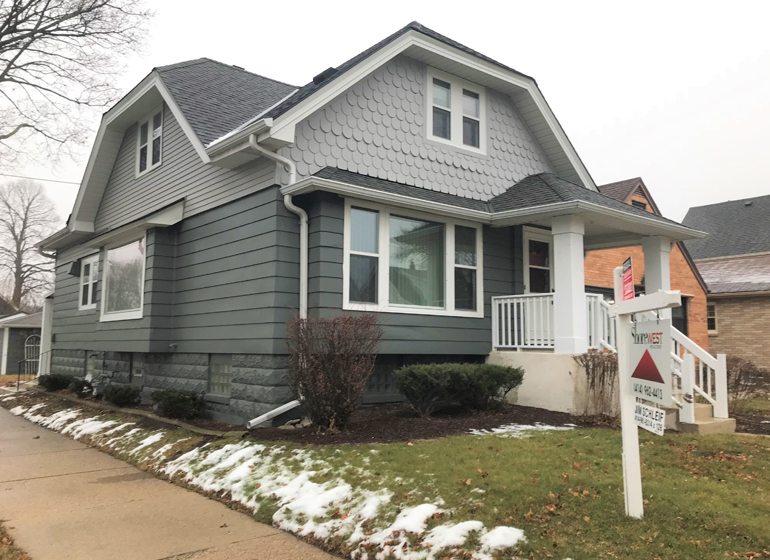Mike Ruzicka, president of the Greater Milwaukee Association of Realtors, has a spreadsheet in his office dating back to 2007 recording the number of new home sales and listings in southeastern Wisconsin.
Activity slumped during the Great Recession. But from 2013 through mid-2015, homeowners were actively buying and selling real estate across the region.

But by mid-2015, the listings column began to drop again. It has never rebounded.
However, more homes in southeastern Wisconsin were sold in 2017 than in 2016, despite the paltry increase in new single family home listings throughout the year.
In 2017, there were 21,357 homes sold, the highest annual total since 2005, when there were 21,642 homes sold in the metro area.
The trend of low inventory and less listings is likely to continue in 2018 as homeowners who are uncertain about how long the economic expansion will continue and how the federal tax law could affect them choose to hang on to their properties, Ruzicka said.
Housing inventory (the time it would take to sell all of the homes on the market at a given time) has hovered around the three- to four-month mark recently. Six months of inventory is generally regarded as a “balanced market,” in which sellers and buyers are evenly matched. Low inventory levels favor sellers.
A recent study by RE/MAX LLC shows the average sales price in the southeastern Wisconsin region, which includes the Milwaukee 7 counties and Sheboygan, increased 6 percent in 2017, to $221,933.
The average number of days on the market decreased 6 percent, from 84 days in 2016 to 68 days in 2017.
“Prices will continue to rise in 2018 as the competition for fewer homes heats up,” the RE/MAX study found. “Local real estate experts expect the frenzy to intensify as more buyers, particularly first-timers, enter the market this year.”
The federal Tax Cuts and Jobs Act signed into law by President Trump three days before Christmas is expected to have an effect on the housing market. But how much so? Ruzicka said experts still are unclear what the full implication will be.
“For years, the federal government allowed for things like deducting your mortgage interest because of the belief that homeownership led to a more stable environment,” Ruzicka said. “That has been upended.”
The new law includes a mortgage interest deduction provision. If someone buys a home between Dec. 14, 2017 and 2026, he or she can deduct the interest up to $750,000 in mortgage debt used to purchase or improve it as an itemized deduction. Anyone who purchased a home before then can deduct interest up to $1 million.
Under the old law, all property taxes paid to state and local governments could be claimed as an itemized deduction. It was also possible to deduct state and local income or sales taxes. The new law bundles all of these so-called “SALT” taxes and limits the deduction to $10,000 for both individuals and married couples.
Ruzicka said the changes put homeowners in uncharted territory.
“When they put the (Tax Reform Act of 1986) together, it took a year,” Ruzicka said. “This was put together in a couple of months. I think it’s dangerous to roll the dice and make so many wholesale changes.”
If renting becomes a more attractive prospect for some, empty nesters who had once considered downsizing to a smaller home might now choose from the wide array of luxury apartments in the region. This could open up the market for older millennials wanting to buy homes.
“In our market, the school districts drive the decisions, and of course cost is a significant factor,” Ruzicka said.
Often, young couples begin looking in municipalities and discover they can’t afford the houses they want or there are not enough homes. They get frustrated after an exhaustive search and decide to wait another year or two before trying again, Ruzicka said.
“The good thing about the pre-recession (period) was housing was easy,” Ruzicka said. “Everyone bought and everything appreciated. Now, there are so many facets to take into consideration. The good thing is the values are (now) stable. They are not going up as much, but a house is someplace where you should not lose money.”
Ruzicka believes in the coming year, all of the M7 counties will be desirable places for people to live. What is needed, however, are more homes.
“Waukesha, Ozaukee and Washington counties have good school districts with low unemployment and Racine, Kenosha and southern Milwaukee counties will have a lot more people interested if Foxconn comes to full fruition,” Ruzicka said.
Because of Milwaukee’s specific challenges – Milwaukee Public Schools, the large number of people living in poverty and crime (whether real or perceived) – there are sometimes issues selling homes in certain areas of the city. But Ruzicka said certain neighborhoods in Milwaukee are thriving, including the East Side, downtown and Bay View.
“There should be an increase in economic optimism and home sales with the current economic expansion, low unemployment and low mortgage rates. But, while overall demand is high, it is not translating to sales,” Ruzicka said. “Many first-time buyers see few options within their budget and home prices that are rising much faster than their incomes. We desperately need an increase in new and existing inventory.”